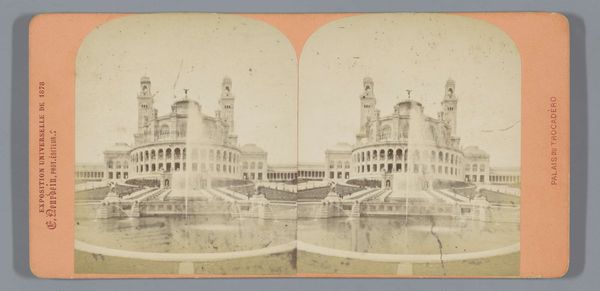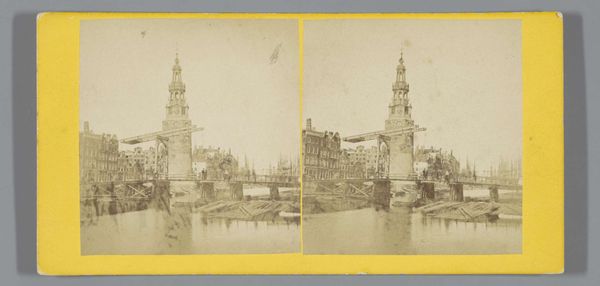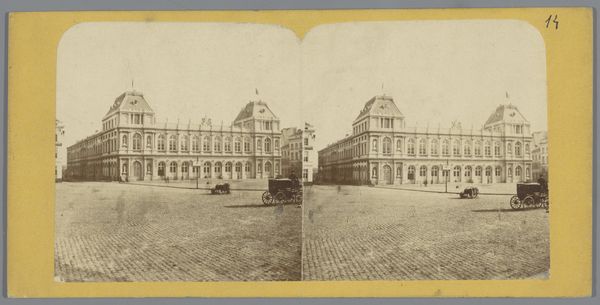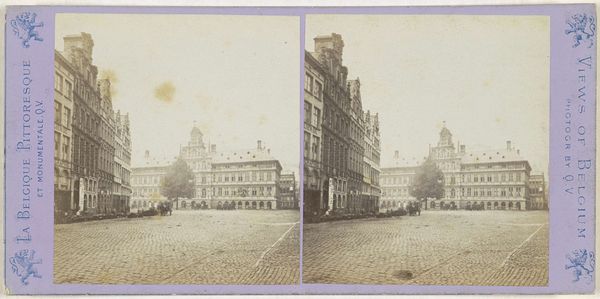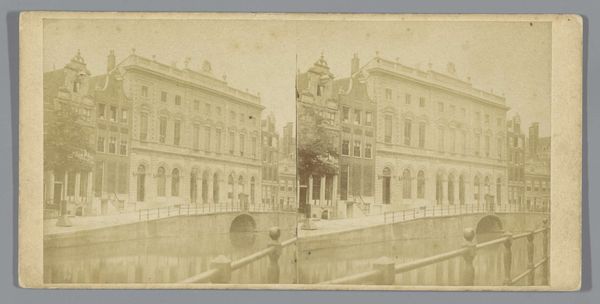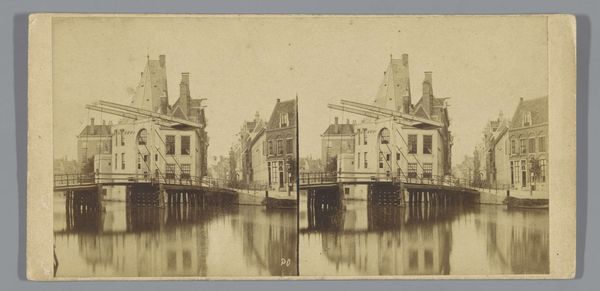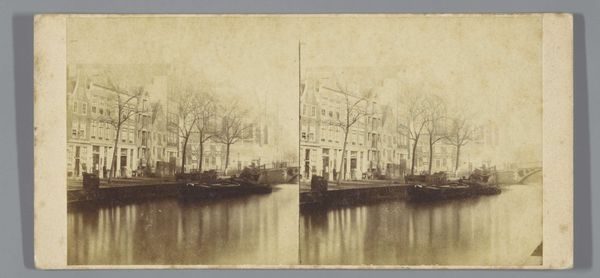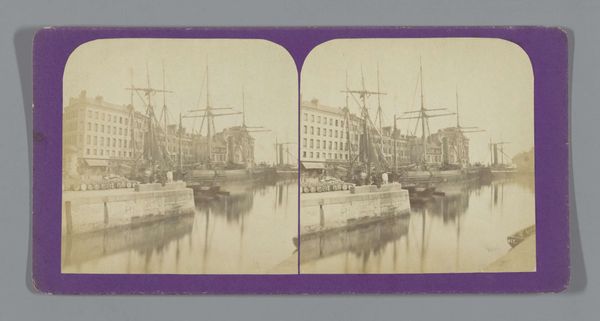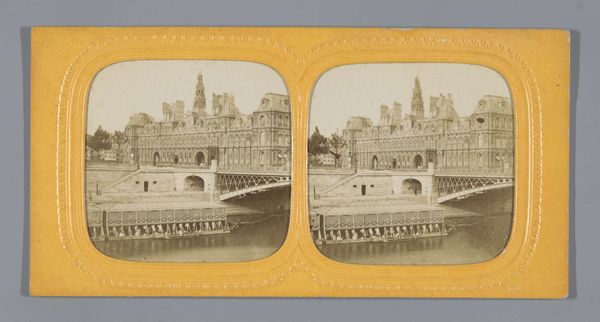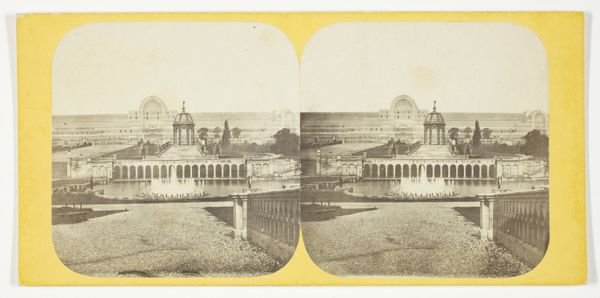
photography, albumen-print
#
photography
#
cityscape
#
albumen-print
#
realism
Dimensions: height 86 mm, width 174 mm
Copyright: Rijks Museum: Open Domain
Curator: Here we have a stereoscopic albumen print dating from between 1852 and 1863 depicting the “Equestrian Statue of Frederick the Great in Berlin.” What strikes you initially about it? Editor: The muted tones create a nostalgic air; almost dreamlike. There's also a strong emphasis on reflection and repetition through the stereoscopic format. Curator: Indeed. These albumen prints allowed for the mass production of images, fueling a sort of visual tourism. This specific image becomes fascinating when considering Frederick the Great's historical positioning, a monarch deeply invested in Enlightenment ideals, yet ruling with autocratic power. Editor: It’s important to examine the production of this image; the process itself necessitates meticulous labor. Someone had to coat the glass plates with albumen, expose them, and carefully develop the print. We are considering both an idealized monument and the tangible realities of image-making in the 19th century. Curator: Precisely. Furthermore, consider the statue itself, not just as an artwork, but as a piece of propaganda solidifying Prussian power and masculine authority. How does photography amplify this? By making it accessible. Affordable copies are sent to households across Europe and beyond, thus solidifying the Prussian King's ideology and visual omnipresence. Editor: I wonder about the labor involved in the maintenance of this public space too. Were enslaved persons used in maintaining the canal, roads, bridges, or buildings surrounding this image? We cannot exclude how the image relates to a larger history of subjugation. The photographic emulsion flattens the social inequalities while simultaneously obscuring details within. Curator: Absolutely, those perspectives matter greatly. And beyond race or class, there's the absence of women from the image as active subjects in their own right in a hyper-masculine historical rendering and visual medium. It provides a rich landscape for exploring historical inequities. Editor: Seeing the image in this light encourages us to not just passively accept its content but interrogate how meaning is manufactured through both process and subject matter. It gives insights into photographic production. Curator: Exactly, looking at the convergence between history, representation, and material reality adds greater depth. Editor: Ultimately, an intriguing example of 19th-century image-making laden with complexity!
Comments
No comments
Be the first to comment and join the conversation on the ultimate creative platform.
